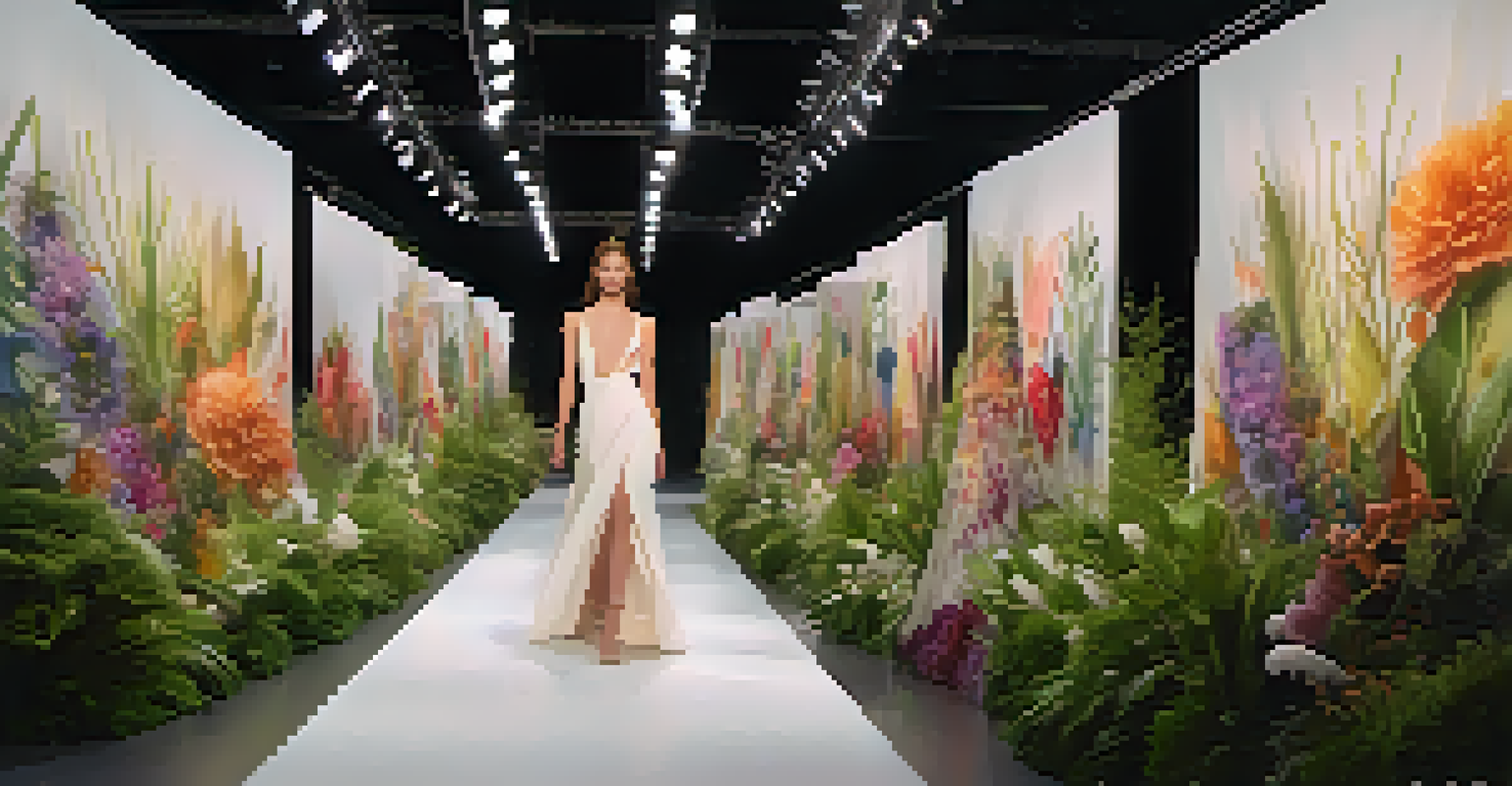Sustainable Fashion Collaborations: Brands Uniting for Change

The Rise of Sustainable Fashion Collaborations
In recent years, the fashion industry has seen a significant shift towards sustainability. More brands are recognizing the environmental impact of their practices and are eager to make a change. As a result, collaborations focused on sustainability are sprouting up, combining the strengths of multiple companies to create a greater impact.
Fashion is about dreaming and making other people dream. We have a responsibility to make sure that we’re not doing that at the expense of the planet.
These partnerships often blend creativity and resources, allowing brands to innovate while minimizing waste. For instance, when a high-end designer teams up with an eco-friendly textile manufacturer, the outcome can be both stylish and sustainable. Such initiatives not only push the boundaries of fashion but also set a precedent for the entire industry.
As consumers become more aware of their purchasing power, the demand for sustainable options grows. Collaborations that prioritize sustainability send a clear message: change is possible when brands unite for a common cause.
Iconic Collaborations Making Waves
Several collaborations have gained attention for their innovative approaches to sustainable fashion. One notable example is the partnership between Adidas and Parley for the Oceans, which transforms ocean plastic into stylish athletic wear. This initiative not only promotes environmental awareness but also showcases how recycled materials can be effectively used in mainstream fashion.

Another exciting collaboration is between Stella McCartney and eco-conscious brands. By creating a collection that emphasizes cruelty-free materials, McCartney highlights how luxury fashion can align with sustainable practices. These partnerships serve as a beacon of hope, inspiring other brands to follow suit.
Sustainability Drives Fashion Collaborations
Fashion brands are increasingly partnering to promote sustainability, combining resources to create innovative and eco-friendly products.
These iconic collaborations not only attract media coverage but also resonate with consumers who value sustainability. By showcasing tangible results, they encourage others in the industry to rethink their practices and consider partnerships as a viable solution.
The Benefits of Collaborating for Sustainability
Collaboration in the realm of sustainable fashion offers numerous benefits. First and foremost, it allows brands to share resources, knowledge, and expertise. This pooling of talent can lead to innovative solutions that might not emerge in isolation.
Sustainability is no longer a trend; it is a necessity. Collaborations that prioritize sustainable practices can lead to real change in the industry.
Moreover, these partnerships can enhance brand visibility and credibility. When consumers see two or more brands coming together for a good cause, it fosters trust and loyalty. This can be particularly effective for smaller brands looking to make a mark in a crowded marketplace.
Furthermore, collaborations can help drive down costs associated with sustainable practices. By combining efforts, brands can invest in better technologies and processes, making eco-friendly options more accessible to a broader audience.
Consumer Demand for Sustainable Choices
Today's consumers are more conscious than ever about their purchasing decisions. With a growing awareness of environmental issues, they seek brands that align with their values. This shift in consumer behavior has put pressure on fashion companies to adopt sustainable practices.
Collaborative efforts in sustainable fashion resonate well with this audience. When brands come together to promote eco-friendly practices, consumers are more likely to support them. This creates a positive feedback loop where demand for sustainable products leads to more collaborations.
Consumer Demand Shapes Industry Trends
Today's consumers are pushing brands to adopt sustainable practices, leading to a rise in collaborations that prioritize eco-friendly choices.
As brands listen to their customers, they are increasingly willing to invest in sustainability. This trend not only benefits the environment but also sets a new standard for the fashion industry as a whole.
Innovative Materials in Sustainable Collaborations
One of the most exciting aspects of sustainable fashion collaborations is the focus on innovative materials. Brands are experimenting with everything from organic cotton to materials made from recycled plastic. These innovations not only reduce waste but also create products that are both functional and stylish.
For example, the collaboration between H&M and the Ellen MacArthur Foundation emphasizes circular fashion, where products are designed for reuse and recycling. This approach challenges the traditional 'buy and discard' mentality, promoting a more sustainable way of consuming fashion.
By prioritizing innovative materials, these collaborations pave the way for a more sustainable future. They demonstrate that eco-friendly choices can be fashionable and desirable, appealing to a broad range of consumers.
Challenges Faced by Sustainable Collaborations
While the benefits of sustainable fashion collaborations are numerous, they are not without challenges. Coordinating efforts between different brands can be complex, requiring clear communication and shared goals. Misalignment can lead to misunderstandings and hinder progress.
Additionally, there are often financial constraints associated with sustainable practices. Brands may struggle to balance profit margins with the costs of sourcing eco-friendly materials or implementing sustainable production methods. This can result in hesitance to fully commit to collaborative projects.
Innovative Materials Redefine Fashion
Sustainable collaborations are exploring innovative materials, demonstrating that style and environmental responsibility can go hand in hand.
Despite these challenges, many brands are finding ways to navigate them successfully. By prioritizing transparency and fostering open dialogue, they can create partnerships that not only overcome obstacles but also thrive in the evolving fashion landscape.
The Future of Sustainable Fashion Collaborations
Looking ahead, the future of sustainable fashion collaborations appears promising. As more brands recognize the importance of sustainability, we can expect to see an increase in partnerships aimed at environmental stewardship. This shift will likely lead to innovative solutions that challenge traditional fashion norms.
Moreover, as consumers continue to advocate for sustainable practices, brands will be compelled to adapt. This could mean more collaborations that focus not just on eco-friendly materials, but also on ethical labor practices and community engagement.

In conclusion, the rise of sustainable fashion collaborations signifies a turning point in the industry. Together, brands have the potential to make a significant impact, reshaping the future of fashion for the better.